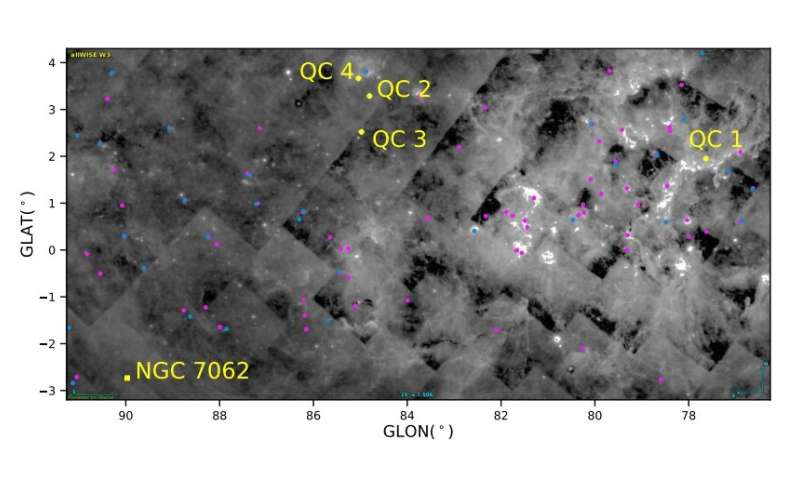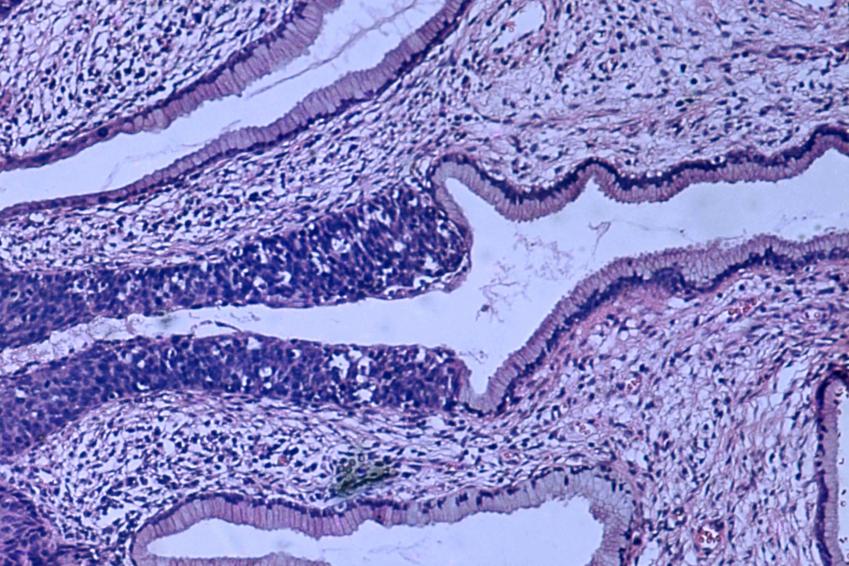#Four new open clusters detected in the Cygnus Cloud
“#Four new open clusters detected in the Cygnus Cloud”

By analyzing the data from ESA’s Gaia satellite, Chinese astronomers have discovered four new open clusters in the Cygnus Nebula Cloud. The newfound clusters, designated QC1 to QC 4, are located between 4,100 and 7,600 light-years away. The finding is reported in a paper published August 17 on arXiv.org.
Open clusters (OCs) are groups of stars loosely gravitationally bound to each other, which form from the same giant molecular cloud,. So far, more than 1,000 of them have been discovered in the Milky Way, and scientists are still looking for more, hoping to find a variety of these stellar groupings. Expanding the list of known galactic open clusters could be crucial for improving the understanding of the formation and evolution of the galaxy.
Now, a team of astronomers led by Songmei Qin of the China West Normal University, reports the finding of four new galactic open clusters. The finding is based on the precise astrometry and photometry data from Gaia DR2 (Data Release 2) as part of the study of nearby molecular clouds.
The researchers have investigated the Cygnus Cloud area, which is a typical star-forming area relatively nearby. It hosts numerous young open clusters and HII regions (containing clouds of ionized atomic hydrogen), however, due to the presence of dust clouds with heavy and non-uniform absorption and reddening, it is assumed that it may contain numerous open clusters still undetected.
“Based on the reliable Gaia DR2 data, we have identified four new open clusters named QC1, QC2, QC 3 and QC 4 in the east part of Cygnus cloud region,” the astronomers wrote in the paper.
The researchers found that the selected member stars of the four newfound clusters show apparent proper motion overdensity in the corresponding vector-point diagram, relatively central concentration in the 3-D spatial distribution and clear main sequence feature on the color-magnitude diagram.
According to the paper, the closest cluster to the Earth from the newly detected four is QC1, with a distance of about 4,100 light-years. The remaining three are located at a similar distance of some 7,600 light-years away. The new OCs have core radii between 2.23 and 3.57 arcmins, and reddening ranging from 0.552 to 0.756 mag.
By analyzing data from some other study, Qin’s team assumes that the four newfound open clusters are very young. QC2 and QC3 are estimated to be between 4 and 5 million years old, while the age of QC1 and QC4 remains to be determined.
In concluding remarks, the authors of the paper emphasized that further observations are required in order to fully investigate the properties and nature of the OCs described in the study.
“Especially more spectroscopic data for the member stars will be of prime importance to determine the dynamical and chemical nature of these clusters,” the researchers explained.
More information:
Discovery of Four New Clusters in the Cygnus Cloud, arXiv:2008.07164 [astro-ph.SR] arxiv.org/abs/2008.07164
© 2020 Science X Network
Four new open clusters detected in the Cygnus Cloud (2020, August 25)
retrieved 25 August 2020
from https://phys.org/news/2020-08-clusters-cygnus-cloud.html
This document is subject to copyright. Apart from any fair dealing for the purpose of private study or research, no
part may be reproduced without the written permission. The content is provided for information purposes only.
If you want to read more Like this articles, you can visit our Science category.
if you want to watch Movies or Tv Shows go to Dizi.BuradaBiliyorum.Com for forums sites go to Forum.BuradaBiliyorum.Com




